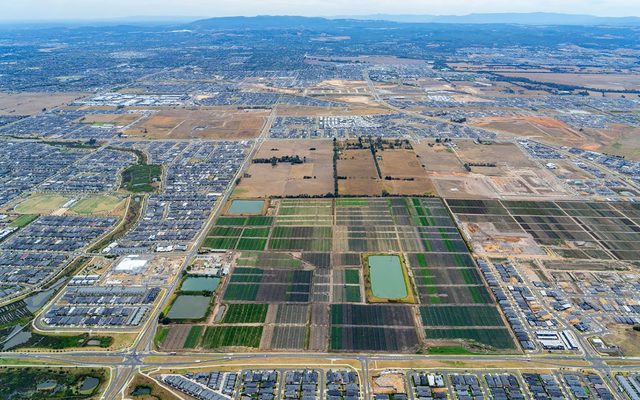This article is from the Australian Property Journal archive
THE Federal Government could engineer a US-style house prices collapse in Australia, if it puts a cap on population growth.
The Government, under pressure by the anti-population growth Liberal Coalition party, is expected to announce a new policy.
The People Power report by property economist MacroPlan commissioned by the Urban Taskforce warns if the so called “sustainable population strategy” is adopted, house prices could fall by as much as 18.3%.
The Urban Taskforce’s chief executive Aaron Gadiel said population growth was a vital part of a modern capital city.
“The Federal Government has indicated that its sustainable population strategy may declare that some regions have reached their ‘carrying capacity’.
“Sydney, Melbourne and South East Queensland have been named and concerns have also been raised about other cities,” he added.
Gadiel said the government does have the power to stop the growth of our major cities.
“It could – if wanted to – prevent new home construction, restrict new infrastructure investment or stop immigrant settlement. But if the government uses those powers our cities, our communities and our national economy will suffer enormously.
“With our ageing population, if a city’s population is to remain static its workforce would need to decline to offset the rising number of people reaching retirement age.
“The loss of workers would hit household income, which would feed in to lower property prices,” he continued.
Gadiel said the projected decline in residential property prices could only occur if the government made a decision to cap a city’s population at its existing level.
“These projections are not relevant if existing policy settings remain and population growth in cities is able to continue, in-line with needs of businesses and the choices of households.
“We don’t foresee a US-style collapse in housing, unless the government deliberately uses population policy to engineer one,” he warns.
According to the report, capping a city’s population at current levels will lead to:
• 18.3% decline for Sydney’s residential property prices over 10 years;
• 15.3% decline for Melbourne;
• 14.7% decline for Brisbane;
• 6.6% decline for Adelaide; and
• 12.6% decline for Perth.
The People Power report also predicts a population cap imposed across Australia’s five biggest cities could reduce national income by $5,000 per person within 10 years.
Gadiel said larger urban areas tend to be more productive because they enable greater labour specialisation, better matching of skills and jobs, and a wider access to goods and services for both households and businesses.
But a restrictive government policy means more people would be forced to settle in areas where they are less productive, earn less and have more restricted choice of goods and services.
“A systemic government policy seeking to redistribute population growth to less productive locations will have a greater economic impact than any changes to the headline rate of national population growth.
“Even if the government allows the annual rate of national population growth to continue at recent levels, the Australian community may end up bearing huge social and economic costs if that growth is not able to be accommodated in major cities,” he added.
“It’s time to stop talking down our major cities. Our capital cities are powerhouses of national productivity – they’re our best assets.
“Our cities face challenges, but those challenges should be addressed with more investment not with a closed door,” Gadiel concluded.
Australian Property Journal



